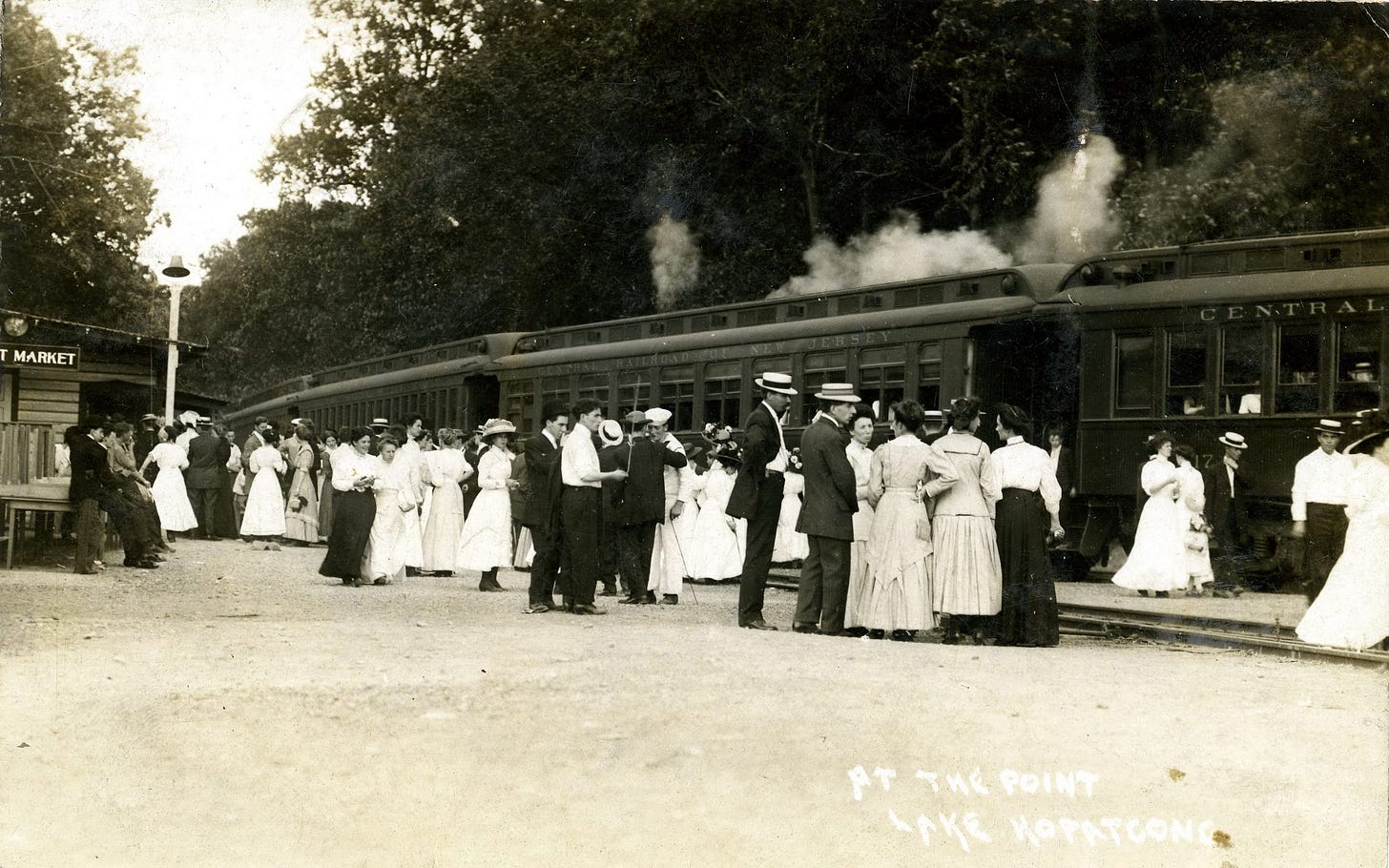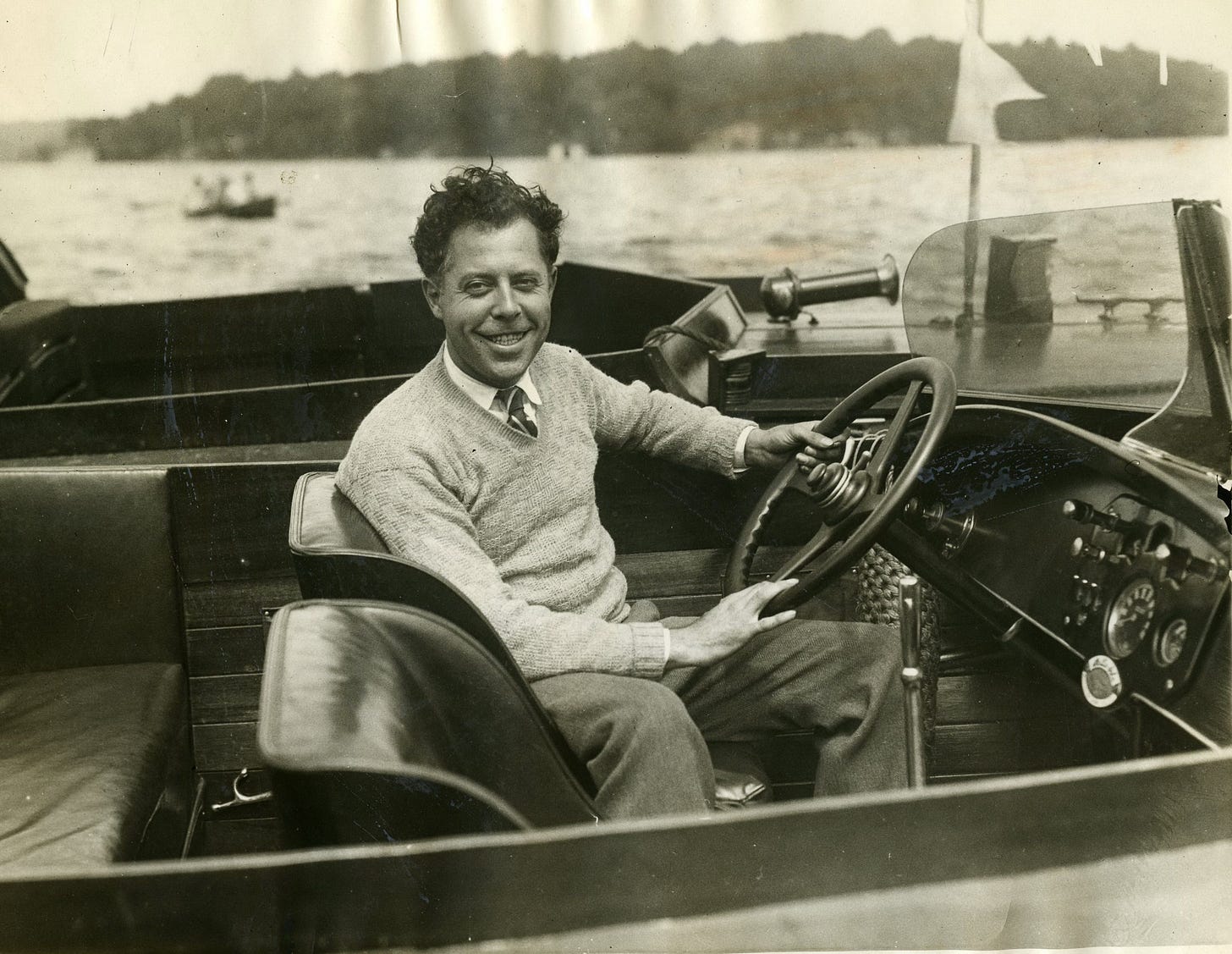I have a confession to make. I am not a lake person. Give me salty crashing waves over calm fresh water any day of the week. In fact, as I write this my family and I are enjoying a week long vacation at the Jersey shore. The state is famous for its coastal hotspots: Belmar, Point Pleasant, Sandy Hook, Ocean City, Long Beach Island, Cape May. But this wasn’t always the case. Over a century and a half ago one of the state's biggest vacation spots was located in Morris County, on the shores of Lake Hopatcong.
The (very) short version of the story:
It turns out that Lake Hopatcong (pronounced Huh-PAT-kaang, according to the internet), has a fascinating, multi-chaptered history that would be impossible to chronicle in it’s entirety here. For a little taste of its pre-civilization history, the lake formed from the very same glaciers that made up the highlands of New Jersey.
Around the 1710’s the first group of white settlers established homes in an area that became Roxbury (which included parts of what would be Hopatcong Township.) Their modest farms extended to what is today the Shore Hills section of Landing at the southern end of the lake. These early settlers called Lake Hopatcong “Great Pond.” John Reading, an early surveyor, used the lake's Native American name "Huppakong" in his 1715 journal.
For the next 100 years Lake Hopatcong was an integral part of the region’s industrial development. In 1750 New York City businessman Garret Rapalje built an iron forge near the southern end of the lake, located in what is now Hopatcong State Park. A dam built for the forge raised the lake’s level by six feet, submerging areas of shoreline.
Following the War of 1812, the United States entered a great era of canal building. Legend has it that in 1822, while fishing at Lake Hopatcong, Pennsylvania politician George P. Maculloch dreamed up the idea of what was to become the Morris Canal. The canal became an inexpensive way of moving large quantities of coal, timber, iron ore and other goods across New Jersey. A few decades later The Morris and Essex Railroad laid tracks through the area to facilitate the movement of goods along the canal.
And here is where the next chapter of Lake Hopatcong’s history begins. New Jersey’s largest lake was now accessible via direct rail link to numerous large cities within the state, as well as New York City. In September 1882, the first passenger excursion train arrived at Nolan’s Point in the town of Landing.
Many early visitors camped on the shores of Lake Hopatcong or built crude cottages. The middle-class would often set up large canvas tents on wooden platforms and dwell in these for a week or more. Wealthy individuals learned of the lake and built Victorian summer cottages. According to a short history of Roxbury Township:
All would enjoy the cool "mountain air" afforded by the advertised "1,200 foot elevation of the lake" (an exaggeration of its actual 926 foot elevation), a welcome summertime relief from the sweltering cities. Many would come up for the weekend and stay in one of the hotels or rooming houses that sprang up around the lake.
The single most important factor in Lake Hopatcong’s growth as a resort was the construction of the Hotel Breslin completed in 1887. This hotel's construction by a group of wealthy and influential individuals (including Garrett Hobart, who later served as Vice President of the United States under President McKinley) gave Lake Hopatcong instant credibility as a resort. As Gustave Kobbe noted in his New Jersey guidebook of 1890, "The Hotel Breslin gave to Hopatcong its first decided 'boom,' for it brought to the Lake the element of wealth and fashion, in the wake of which everything else follows."
The most famous female actress of her era, Lotta Crabtree, had a home built along the lake in the 1880's. Hudson Maxim, noted scientist and inventor, built a large estate in the Borough of Hopatcong at the turn of the century. During the heyday of Vaudeville and Burlesque, the lake became a favorite rest stop for performers during the summer when most theaters closed. Bud Abbot, Bert Lahr, and Milton Berle were among the many show business people to spend considerable time at the lake.
The center for much of this activity was Joe Cook's Sleepless Hollow in Hopatcong’s Davis Cove. Cook was a popular Vaudevillian, comedian and musical theater star who lived at Lake Hopatcong from 1924 to 1941. Among other amenities, his home boasted a nine hole golf course, two bars, and tennis courts at which celebrities (including Babe Ruth) could often be found.
Final thoughts:
New Jersey’s Lake Hoptacong has a long and vibrant history that’s a bit at odds with it’s present day status as a sleepy residential community. Most of the lake’s resort hotels and attractions experienced a steep decline after the Great Depression, and soon the various summer homes that lined the lake turned into year round residences.
Theres enough to say about Lake Hopatcong that Hometown History should certainly return and investigate it’s era of industry, or it’s heyday as a vaudeville hotspot. But for now I need to return my attention to the Jersey shore, this time with a little more respect for the calm, still waters of New Jersey’s largest lake.
Links:
http://www.roxburynewjersey.com/history.htm
https://lakehopatconghistory.com/
https://www.njskylands.com/history-lake-hopatcong







Thanks. That was a very nice, bite-size read. Keep them coming. ;)